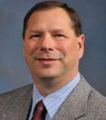DOWNLOAD A COPY OF: “Living Water Smart in British Columbia: Strong, Informed, and Enduring Political Leadership is a Foundation Piece” – released by the Partnership for Water Sustainability in March 2022

“The Regional Board provided the Province with feedback on exactly what municipalities and regional districts need so that we can take on more initiative and responsibility around watershed-scale decisions. This is a time for regional districts and stakeholders to speak up to ensure that what goes in the Watershed Security Strategy and Fund is adequate to meet the needs that we have been calling for. Fundamentally it comes down to resourcing. Funding will enable all the outcomes that the Province is hoping to achieve,” stated Ben Geselbracht.
DOWNLOAD A COPY OF: “Living Water Smart in British Columbia: Watershed Security Strategy is a Building Block” – released by the Partnership for Water Sustainability in March 2022

“From our ‘One Water’ perspective, it is unfortunate that Government’s water program is now spread across three Ministries, along with a fourth entity, the BC Oil and Gas Commission. This creates operational challenges in ensuring a consistent, unified message. Four entities sharing responsibility for ‘water’ exacerbates and accentuates the urgent need for effective communication, cooperation, coordination, and collaboration across government, including other ministries. Without the 4Cs as a guiding philosophy, the risk is high that good intentions would be undermined by generational amnesia,” stated Ted van der Gulik.
DOWNLOAD A COPY OF: “Living Water Smart in British Columbia: The Role of the Municipal Champion as the Interpreter” – released by the Partnership for Water Sustainability in March 2022

“You need layers of champions. You need a champion in the community. You need a champion in the municipality. You need a champion to keep everybody aware and moving forward. It is easy to hide behind your bylaws and manuals of practice and say that this is the way it has to be. It is not until you start working with people in the other disciplines that you realize well, we can all have wins here. A little bit of tweaking and we can all have wins. Work. See the barrier. Knock it down. Maybe there will be a limitation that comes up. But that is how you get recharged to work, see the barrier, and knock it down,” stated Adriane Pollard.
DOWNLOAD A COPY: “Living Water Smart in British Columbia: How We Transform the Land – Intergenerational Vision to Change Standards of Practice” – released by the Partnership for Water Sustainability in February 2022

“Today, what we as leaders do, will resound for the people of the future, their cities and their regions. In fact, for the world at large. One of the reasons that I ran for office in 1972, and why I served for 20 years as Mayor of Delta, and 7 years at Chair of Metro Vancouver was ‘to make a difference’…. a difference to the children and their families of the future. We must also consider that we are not the only ones sharing this planet, and what we do on a daily basis, can impact positively or negatively having a resounding effect and rippling effect of which we must be aware,” stated Lois Jackson.
ARTICLE: “Profile in Courage – Oak Bay’s Sustainable Funding Plan for Infrastructure Replacement” (Asset Management BC Newsletter, Winter 2022)

“Anybody who is going to hear or read about the Oak Bay story, the thing that they really must understand is the role of Council. There is a special type of courage that Council needs to have to say, ‘give us the naked truth’. There is not a lot of political up-side to shining a light on infrastructure challenges. Oak Bay Council did that, no holds barred. They wanted to know what the situation was. And so that clearly demonstrates a strong commitment to an asset management culture in Oak Bay which is growing day by day. Oak Bay’s driver for action is the $463 million cumulative infrastructure funding gap,” stated Christopher Paine.
DESIGN WITH NATURE FRAMEWORK FOR SYSTEMS APPROACH TO GREEN INFRASTRUCTURE: “Our partners in provincial and local government tell us that the oral history, and the intergenerational sharing and learning that goes with it, are rapidly being lost. The ramifications of this new reality create a sense of urgency to inform and educate BC audiences,” stated Kim Stephens when the Partnership for Water Sustainability released a legacy resource introducing the ‘green infrastructure continuum’ idea as metaphor for hope (February 2022)

“As a metaphor for hope. the continuum idea allows us to answer the question, how well are we doing? The green infrastructure continuum is the way we measure progress to achieve the Living Water Smart vision for creating liveable communities and protecting stream health. The lynchpin for achieving these ‘design with nature’ outcomes is intergenerational collaboration, driven by systems thinking. Hope springs from a systematic and adaptive approach that builds on a solid foundation, and consistently gets it right. The ramifications of this new reality create a sense of urgency,” stated Kim Stephens.
DOWNLOAD A COPY OF: “Living Water Smart in British Columbia: Design With Nature Framework for Integrating Across Infrastructure Systems” – released by the Partnership for Water Sustainability in February 2022

“The story of EAP, the Ecological Accounting Process, is how we got to the idea of the stream corridor system as a Natural Commons and connecting it to the challenge for streams to survive in an urban or urbanizing setting. The driver is degradation of stream channels and streamside riparian setback zones. EAP establishes the methodology and metrics for tackling the Riparian Deficit,. The strength of EAP is in how it looks at and values streams as systems, as natural commons assets, and as a land use. A stream corridor is a land use because it is defined in regulations and has a financial value,” explained Tim Pringle.
INTERWEAVING INDIGENOUS KNOWLEDGE & WESTERN SCIENCE: “In British Columbia, hydrometric records are fairly limited in time and geographic coverage. From a hydrology perspective, then, interweaving science and a rich oral history would turn a comparatively short period of data collection into thousands of years of knowledge. This might profoundly change how we view extreme changes in the water cycle and the consequences in BC,” stated Kim Stephens, Partnership for Water Sustainability (February 2022)

“If Thomas Bayes (1702-1761) was alive today, I have no doubt that he would say, oral history extends the period of period and our understanding of what the data mean. Bayesian statistics offers a framework for combining different kinds of information and making best use of what is available. Four decades ago, a municipality brought public works staff back from retirement so that I could interview them and compile the oral history of strategic culvert installations. These ‘data inputs’ made it possible to generate flood frequency curves,” stated Kim Stephens.
DOWNLOAD A COPY OF: “Living Water Smart in British Columbia: Oral history extends the period of record and our understanding of what the data mean” – released by the Partnership for Water Sustainability in February 2022

“Interweaving means bring together two different ways of knowing into one new concept that weaves the strengths of both ways of knowing, rather than criticizing one or the other; or trying to make them compete. It is a more collaborative way of knowing. There is a sense of humility that comes with interweaving and acknowledging that Western science is not the only way of knowing. There are other ways of knowing. And so, the humility part is interweaving the strengths of those other ways,” stated Michael Blackstock.
DOWNLOAD A COPY OF: “Living Water Smart in British Columbia: A Network Allows People to Move Out of Workplace Silos” – released by the Partnership for Water Sustainability in February 2022

“Often, silos are self-imposed by people with an absence of historical knowledge that results in a fear of failure and the subsequent criticism. People in one silo now tend to not interact with colleagues in other silos, both within their own workforce and in their greater community. In today’s world, it is the norm for many people to exit training programs and find themselves in managerial roles without the benefit of exposure to field experience that would give them both a strong basis and confidence upon which to make decisions,” stated Joe McGowan.

